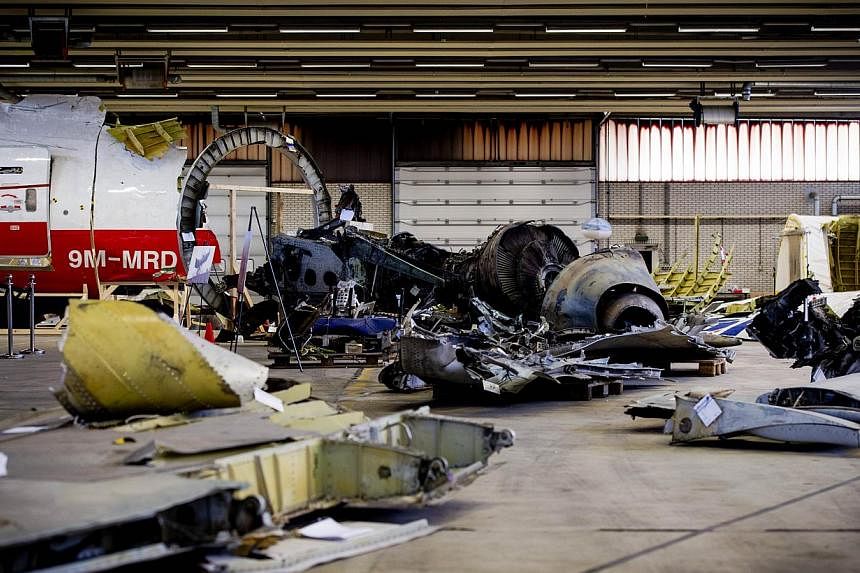THE HAGUE (REUTERS) - Nine months after Malaysian Airlines MH17 crashed in eastern Ukraine, investigators have gained access to the area where the last unexamined wreckage lies and hope to recover remains of the last two victims.
Heavy fighting has stopped the Dutch-led team collecting evidence from a field of debris in the north-west of the crash site that was until recently on the front line of the conflict between Moscow-backed rebels and Ukrainian government troops. "Now that the front line has moved, we can get there safely," Theo ten Haaf, an air force commander in charge of security, said. The area, near the village of Petropavlivka, was still strewn with landmines, he said.
The remaining aircraft fragments could yield information that might help show the cause of the crash, though the focus of the team of 30 Dutch, Australian and Malaysian experts will be on the remains of the 298 passengers aboard the Boeing 777.
Two thirds of the victims of the crash were Dutch, and the Netherlands has taken the lead in the air safety and criminal investigations into the circumstances of the crash, which triggered the severest East-West tensions since the Cold War.
Western governments believe the aircraft was shot down accidentally from the ground by Moscow-backed rebels, and Dutch prosecutors have said this is the likeliest scenario, though they are open to a Russian theory that it was shot down by a Ukrainian air force jet.
Remains of 296 of the people aboard the Amsterdam-Kuala Lumpur flight have been identified, and experts believe the remains of the final two will be in one of two areas in the 10 sq km crash site where fires blazed most fiercely after the crash. "There are two burn sites, a large one and a small one, where we expect any further remains will be found," Pieter-Jaap Aalbersberg, the police officer in charge of the recovery mission, said.
From the beginning, fighting in and around the crash site has hampered access to the wreckage, causing anger in the Netherlands and in other countries whose citizens were killed.
Officials say the process of identifying the last remains will be extremely difficult, with body fragments likely to be buried up to 30cm deep in the soil and in a state that will make it difficult to extract DNA.

